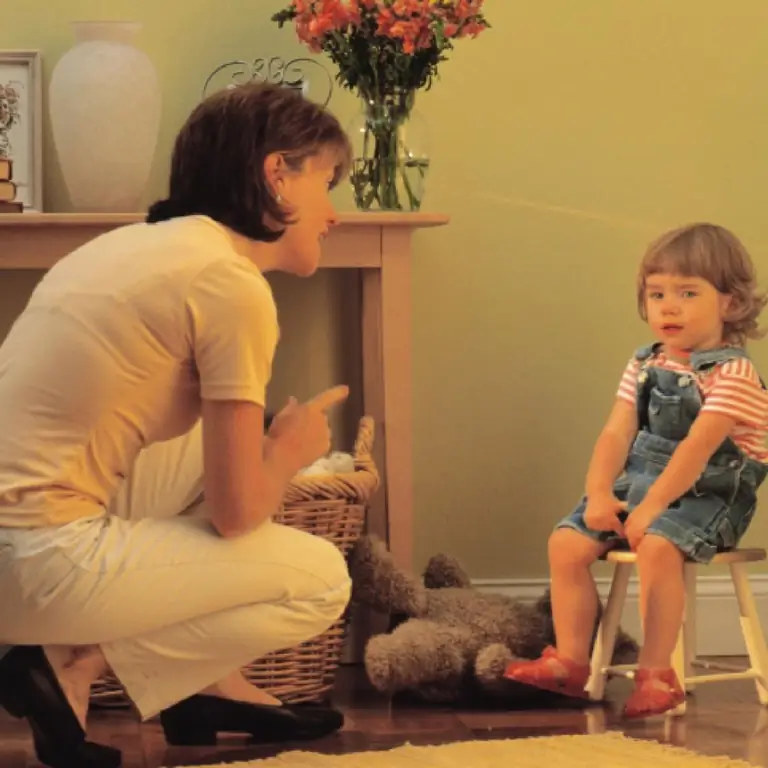2026 Author: Priscilla Miln | [email protected]. Last modified: 2025-01-22 17:55:18
The formation of sound pronunciation in children should be completed by 5-6 years. However, judging by the feedback of teachers, many first-graders have certain speech therapy problems. This significantly complicates their communication with other people, leads to the appearance of specific errors in the development of writing. How can I spot a disorder in my child? Which speech defects will go away with time, and which ones should be immediately addressed to specialists?
Pronunciation disorders
The baby's speech is actively formed at preschool age. For quite a long time, the following defects may be observed in it:
- No sound. It is simply skipped ("oshka" instead of "spoon", "eye" instead of "pen").
- Replacing some sounds with others, lighter ("yyba" instead of "fish", "sal" instead of "ball").
- Sound distortion (burr, nasality).
- Mixing phonemes that are pronounced correctly. The child says either "car" or "masina", constantly getting confused.
Various defects in sound pronunciation in children can be combined with other problems: the lack of phrasal speech, a small vocabulary, the use of incorrect grammatical forms. This may indicate a complex disorder in which one cannot limit oneself to working with sounds.

Causes of violations
Some parents try to correct the child's defects by constantly correcting his speech and making comments. This leads to a sharp negative reaction of the baby, and sometimes to stuttering. Correcting the sound pronunciation in children is not an easy process. You need to start it not with comments, but with identifying the causes of defects. They can be:
- Hearing problems.
- Impaired differentiation, in which the baby does not distinguish between phonemes that are close in acoustic sound (for example, "d" and "t").
- Incorrect anatomical structure of the tongue, palate, jaw, various bite defects.
- Limited mobility of the vocal apparatus (especially lips and tongue).
- Wrong upbringing, when parents "liss" with the child for too long or, conversely, do not pay attention to him, planting him in front of the TV.
- Constant communication with people with speech defects. Problems can also arise when parents speak very quickly and indistinctly.
- Bilingual. The kid is confused in the peculiarities of pronunciation,which leads to distortion of sounds in the likeness of another language.
Younger preschoolers
The baby's articulation apparatus develops gradually. Therefore, in order to achieve correct speech, do not forget about the peculiarities of sound pronunciation in children.

It's ok if at 3 years old:
- child softens consonants ("l'ozitska" instead of "spoon");
- whistling and hissing phonemes are omitted, replaced, confused or slurred;
- there are no "l" and "r" sounds in speech;
- voiced phonemes are stunned;
- instead of posterior lingual sounds, anterior lingual ones are pronounced ("dorod" instead of "city", "tarandash" instead of "pencil").
Children can clearly pronounce a sound, but not pronounce it in combination with others, rearrange syllables in words, skip consonants if they are nearby. Parents should be wary if the baby is reluctant to make contact, does not understand the simplest requests and questions, manages with fragment words (says "ma" and not "mother", "ako" and not "milk").
Medium preschoolers
At the age of 4-5 years, the development of sound pronunciation in children is very active. Softening of sounds almost disappears. Children begin to pronounce hissing sounds, most have the sound "r", but their pronunciation has not yet been automated. A child may say one word correctly and make a mistake in another. At the same time, the sounds are no longerskipped and replaced by others.

Sometimes, having learned to pronounce the phonemes "w", "r", "g", the baby inserts them into all words ("dove" instead of "dove", "zhub" instead of "tooth"). But in general, speech becomes clearer, children rearrange syllables less often, almost do not abbreviate words. It is considered normal if the baby incorrectly pronounces whistling, sonorous ("p", "l") and hissing sounds. In other cases, consult a speech therapist.
Senior preschoolers
Speech therapists say that by the age of 5-6 years, the correct sound pronunciation in children should be fully formed. However, approximately 20% of children have speech distortions.
They may be related:
- With insufficient automation of hissing sounds, as well as the phonemes "l" and "r". Some children develop a habitual burr or lisp.
- Stuttering and dyslalia requiring professional help.
- With a casual pronunciation, when the child is in a hurry, swallows the endings, pronounces sounds indistinctly.

As school entry approaches inexorably, increased attention must be paid to working on clear speech. When in doubt, it is better to go to a speech therapist and undergo a thorough diagnosis.
Examination of sound pronunciation in children
Beginning the diagnosis, the speech therapist will carefully check the structure of the speech apparatus of a small patient. The kid will be askedperform various movements with the jaw, lips and tongue. This is how their mobility is revealed.
To investigate the characteristics of sound pronunciation in children, they are asked to pronounce the sound in isolation. It is checked how quickly articulatory switching occurs. Toddlers repeat syllables ("pack-cap") or chains of them ("mna-mnu-many").

Then pictures are shown. In the name of the objects depicted on them, there is a studied sound. It stands in different positions and combinations. If the child makes distortions, the speech therapist asks to repeat the word after him, to pronounce syllables with a problematic sound. It is important to select not only easy, but also polysyllabic words for the examination.
Sometimes the baby pronounces the names of the pictures correctly, and in ordinary speech he replaces some phonemes with others. It helps to check this by pronouncing tongue-twisters, nursery rhymes, where the studied sound is often found, conversations based on plot pictures.
Phonemic hearing test
In addition to diagnosing sound pronunciation, children are tested for their ability to distinguish between phonemes. Attention should be focused on the following pairs of sounds: "hissing + whistling", "hard + soft", "deaf + sonorous", "r + l". In this case, the following types of tasks are used:
- repeat oppositional syllables after the speech therapist ("ri-li", "uch-uch");
- reproduce a series of 3-4 elements ("f-f-b-b-for");
- perform a movement (clap, jump) upon hearinggiven syllable;
- select those pictures whose names begin with the specified sounds;
- explain the meaning of similar-sounding words (for example, "varnish-cancer") or show the right picture.

Correction of sound pronunciation in children
Speech therapy work includes three stages. Let's list them:
- Preparatory stage. The child is taught to distinguish by ear the formed phoneme. The muscles of the lips and tongue must learn new movements for them. For this, articulatory gymnastics, exercises for the formation of the correct air stream are used. The child is engaged in front of the mirror, all movements are done at a slow pace. If difficulties arise, you can help the tongue with your hands (for example, lift it up or roll it into a tube). Parents can take on this part of the work by consulting a speech therapist or reading relevant books.
- Staging sounds. This part of the work is best entrusted to a speech therapist who is familiar with special techniques. He will teach a preschooler in a playful way to pronounce the required sound in isolation from others.
- Automation of the phoneme in speech. In order for a sound to be pronounced automatically, it must be repeated many times. First, the baby pronounces it in syllables of various types, then in words, and various positions are worked out. Only after that you can move on to sentences, short poems and tongue twisters. They should not contain sounds that the child does not yet know how to pronounce. At the last stage, the retelling of short stories is used, the description of plot pictures.
Sometimes children, having learned to pronounce a sound, stubbornly mix it with another. In this case, work is underway to differentiate them. The kid is invited to find differences in articulation when pronouncing each of the sounds. Then phonemes are worked out in syllables, similar words, and, finally, in tongue twisters.
Organization of classes
Education of sound pronunciation in children is not a quick process. Especially if a distortion of a large number of phonemes is revealed. You have to put them gradually, starting with the lightest. At the same time, sounds should not be practiced, during the pronunciation of which the organs of speech occupy the opposite position. For example, "with" requires a wide tongue with a groove in the middle. It should not be put together with the sound "l", which requires a narrow tongue to pronounce.

Classes with a speech therapist should be carried out systematically, 2-3 times a week. To interest preschoolers, toys, pictures, board games (lotto, dominoes) are widely used. However, work on sound pronunciation should continue at home. The speech therapist usually gives parents homework. Most often, this is a complex of articulatory gymnastics, which is recommended to be performed daily. To form the correct speech breathing, it is useful to sing vowels, blow papers off the tongue, blow bubbles.
The development of speech function is inextricably linked with the formation of fine motor skills. Therefore, if your child has problems with sound pronunciation, get acquainted with finger games. Try to sculpt every daydraw, cut out paper figures, make jewelry from beads, assemble mosaics or constructors.
Sound pronunciation in preschool children should be given the closest attention. After all, the shortcomings that have taken root from early childhood are subsequently corrected with great difficulty. To warn them, parents should carefully monitor their speech, pronounce all sounds clearly and not postpone a visit to a speech therapist if the baby has alarming symptoms.
Recommended:
Children's behavior: norms, characteristics of behavior, age standards, pathology and correction

Child stomping on the seat next to you, laughing or singing loudly, throwing tantrums in the store, collecting judgmental looks. In the kindergarten, they complain that he beats other boys, takes away toys from babies, or pulls girls by the ponytails. Or maybe the baby, on the contrary, does not play with anyone and silently waits for his mother at the window, not being distracted by games and activities? What behavior of children is considered the norm and where are its boundaries?
Identification and development of gifted children. Problems of gifted children. School for gifted children. Gifted children are

Who exactly should be considered gifted and what criteria should be followed, considering this or that child the most capable? How not to miss the talent? How to reveal the hidden potential of a child who is ahead of his peers in terms of his level of development, and how to organize work with such children?
Examination of sound pronunciation in children: methodology and exercises

I would like to note right away that speech disorders in children are one of the most common and common problems. A huge number of parents, when their baby is under the age of five, undergo a sound pronunciation examination with him and struggle with such a problem. But the difficulty also lies in the fact that parents most often fall into one of the extremes
Sound culture of speech for preschool children

Speech is the most important human achievement. With the help of sounds, words, expressions, additional gestures and intonation, you can communicate with other people. Proper communication is called a culture of speech. This is the ability to speak correctly, taking into account certain conditions, the purpose of the conversation, as well as the use of all language means (intonation, vocabulary, grammar)
Correction of dyslexia in younger students: exercises. Types of dyslexia and methods of correction

When a child is sick, neither parent can feel at ease. Sleepless nights, waiting for the doctor's verdict - all this affects the condition of parents and their children

